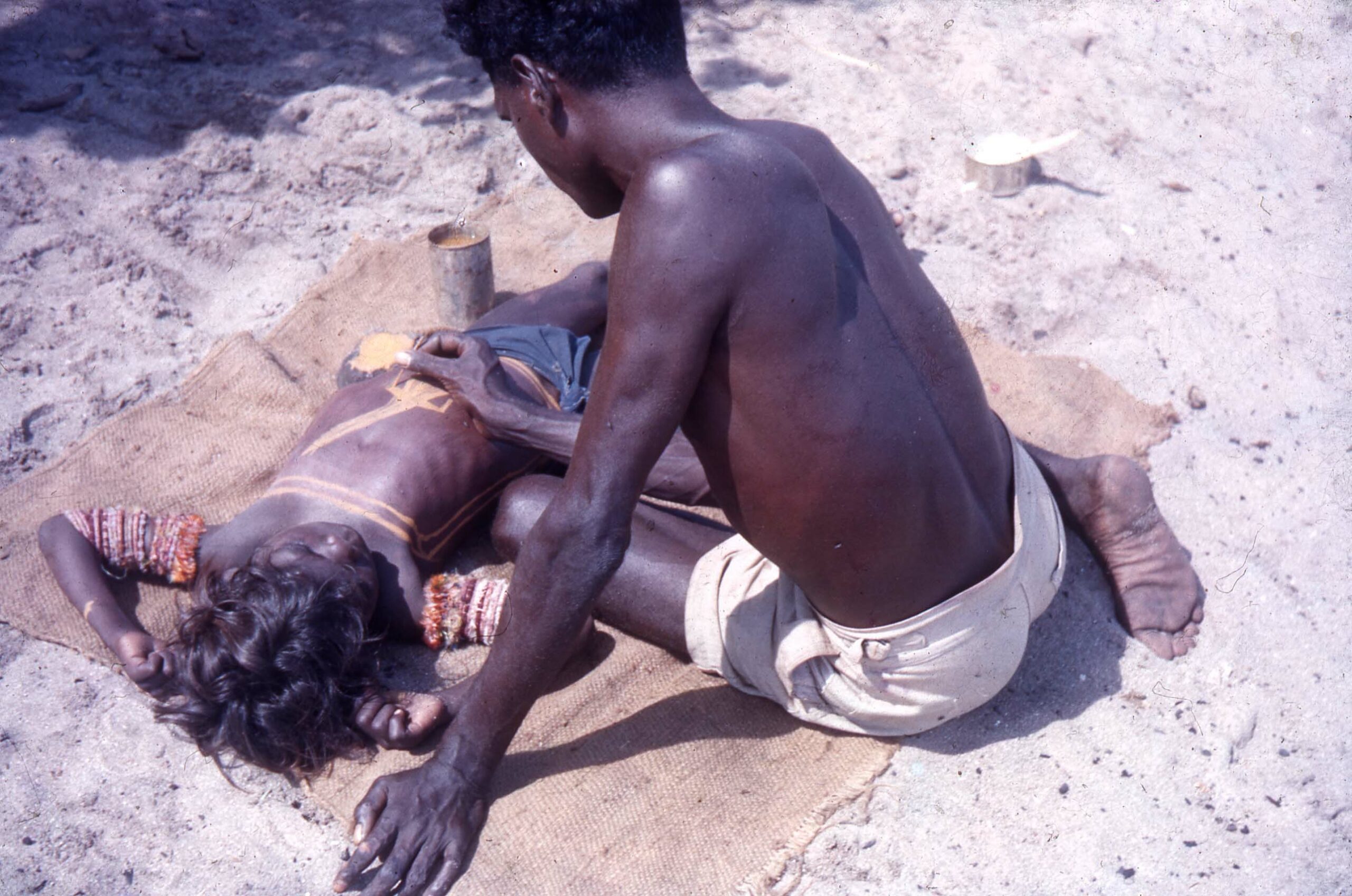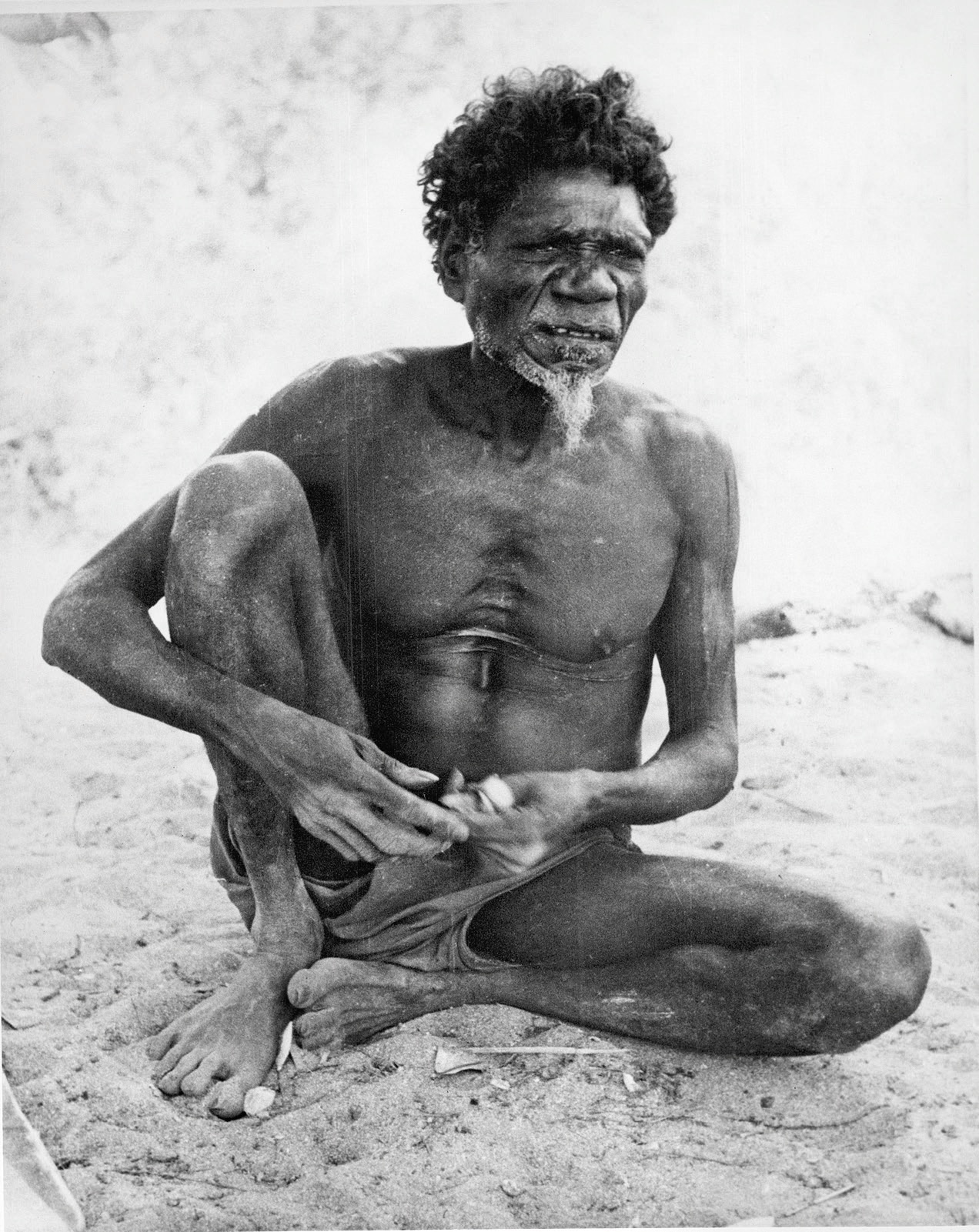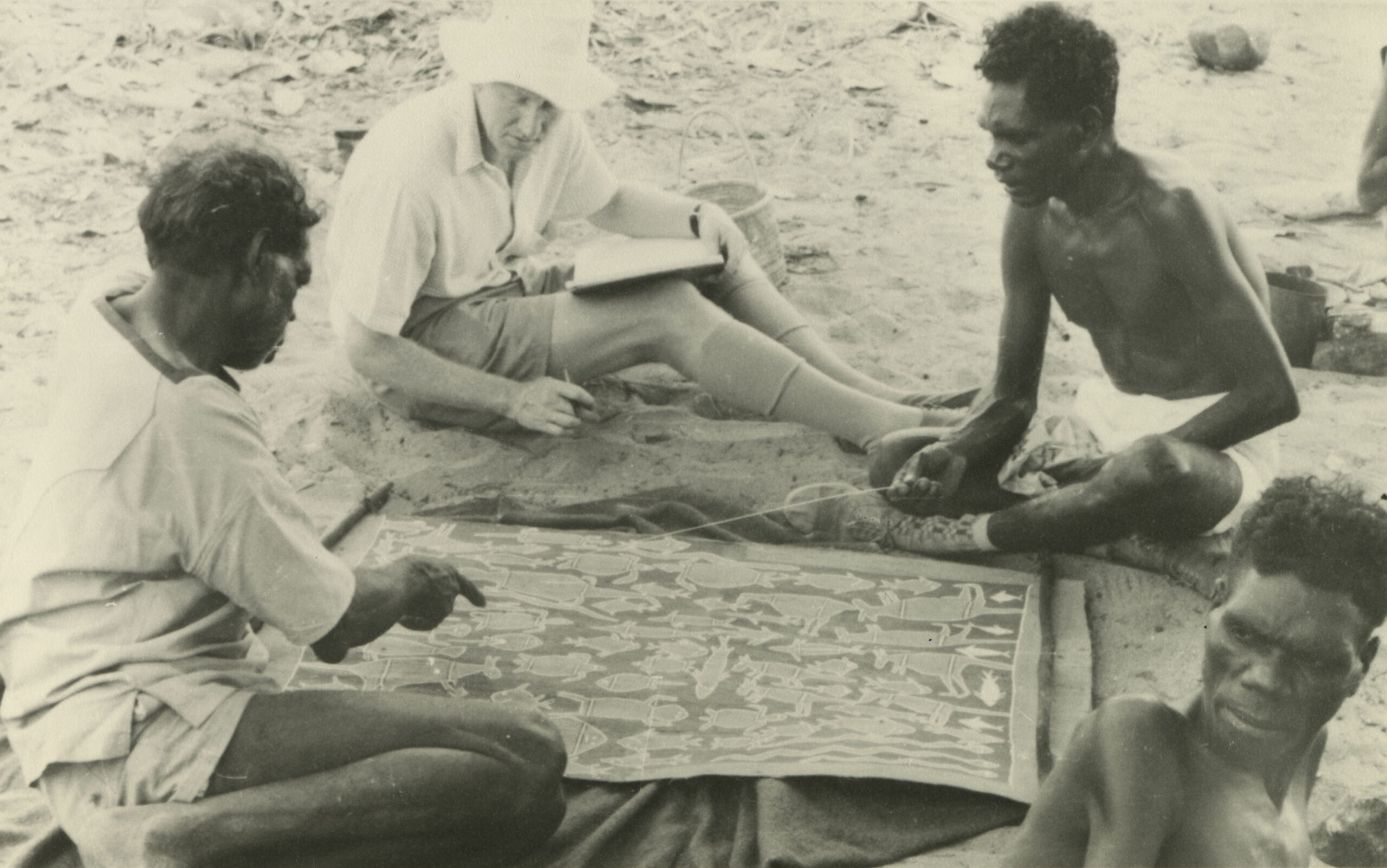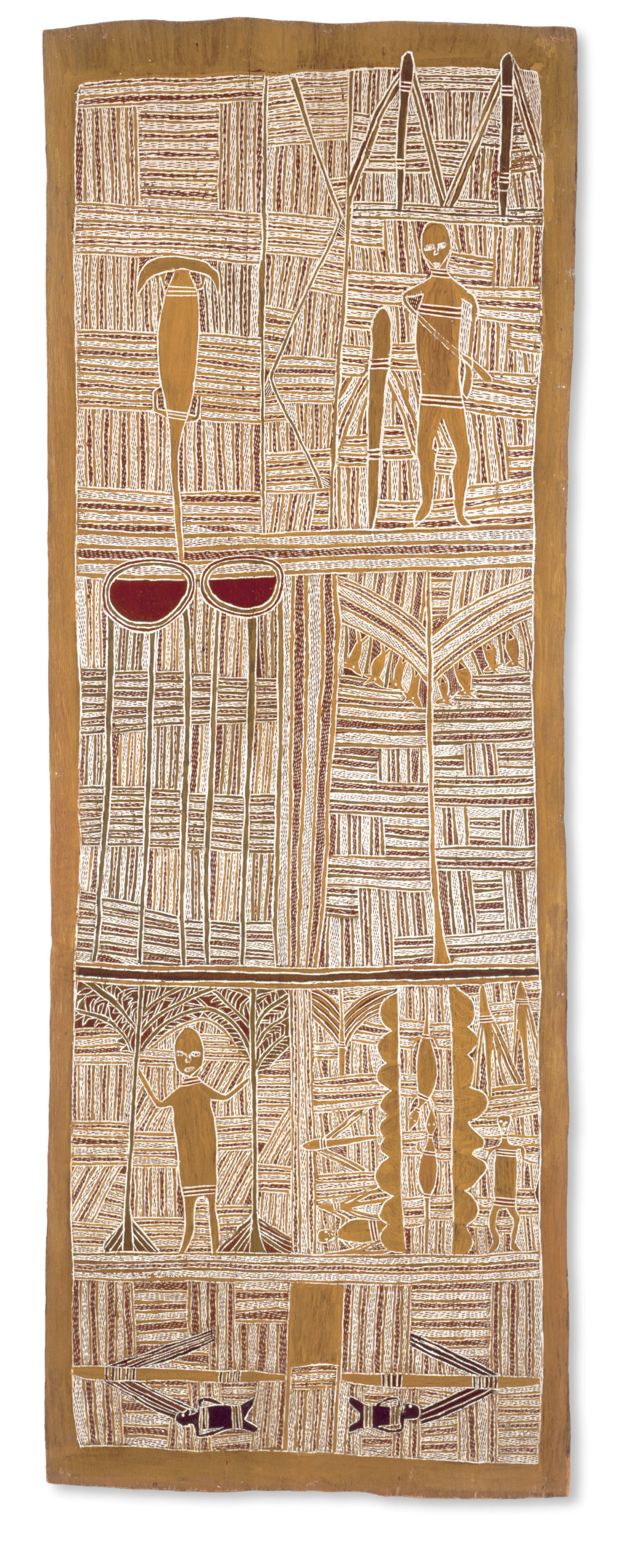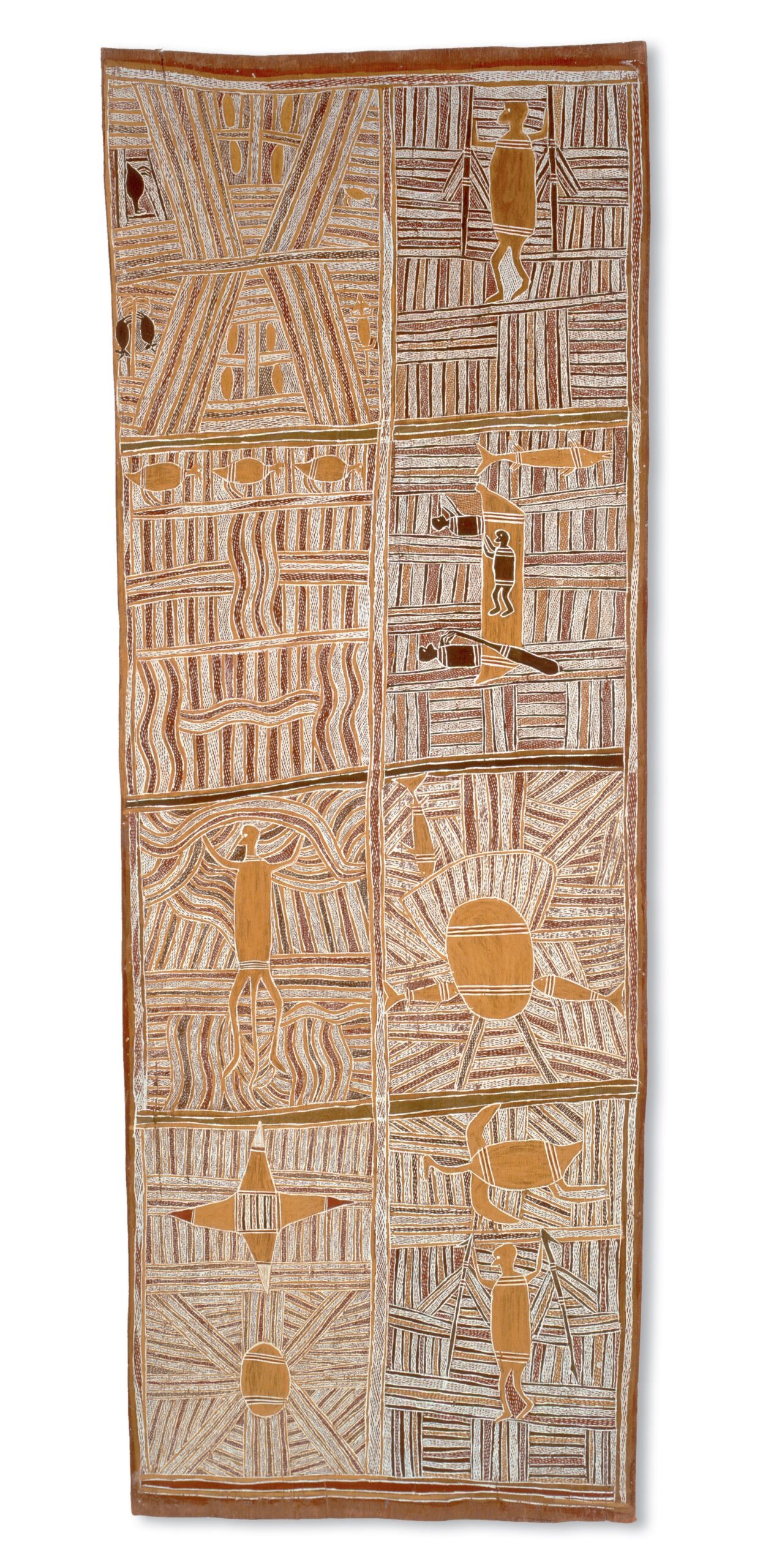1950s
Following a rise in the demand for bark paintings, two primary motivations emerge for Yolŋu: art making as a means of generating income and art making to enact political change and to open dialogue with ŋäpaki (non-Yolŋu). Bauxite is discovered on Yolŋu Country, which will soon irrevocably impact Yolŋu life, fueling the fight for land rights.
1950
Reverend Edgar Wells and his wife, Anne Wells, move to Milingimbi, where he serves as superintendent of the mission and she as a nursing sister (1949–59).
1951
Art and Magic in Arnhem Land, organized by the Smithsonian Institution and the National Collection of Fine Arts, opens at what is now the National Museum of Natural History, Washington, DC.
Karel Kupka, the Czech-French artist and ethnographer, embarks on expeditions to Arnhem Land to collect Aboriginal art, first on behalf of the Museum für Völkerkunde und Schweizerisches Museum für Völkerkunde (now Museum der Kulturen Basel), and then for the Musée national des arts d’Afrique et d’Océanie (now Musée du quai Branly), Paris.
1952
Large deposits of bauxite are discovered in Melville Bay and on the Gove peninsula. As a result, the Northern Territory Legislative Assembly changes the Mining Ordinance of 1939–60 to allow mining rights to be granted to companies on Aboriginal reserves.
The American anthropologist Patricia Waterman and her husband, the ethnomusicologist Richard A. Waterman, travel to Yirrkala on Fulbright Fellowships. Richard is the first to make field recordings of songs at Yirrkala, while Patricia collects bark paintings, ten of which are now in the Phoebe A. Hearst Museum of Anthropology, University of California, Berkeley.
The National Gallery of Victoria, Melbourne, acquires its first bark paintings following the 1943 Primitive Art Exhibition.
1953
Ships from Brisbane begin calling at Melville Bay, which helps ensure the timely and safe delivery of Yolŋu art. Prior to that, Methodist missionaries in Arnhem Land used a small boat that traveled between Darwin and the mission stations. In 1954, airmail communication is extended to Yirrkala, which expedites correspondence.
The Australian Aboriginal Culture Exhibition is organized primarily by the anthropologist Fred McCarthy at the Australian Museum, Sydney, under the auspices of the Australian National Commission for UNESCO. It travels to the United States and Canada between 1953 and 1957 before returning to tour Australia.
1954
Gordon Symons assumes the superintendency of the Yirrkala Mission (1953–58). He appoints the missionary Douglas Tuffin (1950–63) to be responsible for marketing art.
1955
Malawan Marika teaches his daughters how to paint, which makes them the first known Yolŋu women to create bark paintings. Narritjin Maymuru and Yaŋgarriny Wunuŋmurra also encourage their daugh ters to paint.
Four delegates from Arnhem Land attend a Methodist youth convention in Sydney, including a Yolŋu resident of Yirrkala. Although many Yolŋu had visited Darwin prior to 1950, this is possibly the first visit to a southern Australian city.
1957
The Northern Territory Welfare Ordinance 1953 comes into effect, resulting in the classification of Aboriginal Australians in the Northern Territory as wards who can be subjected to restrictive legislation.
Bark Paintings: Aboriginal Art of Australia opens at the Institute of Contemporary Art, London, before traveling to Edinburgh, Zurich, Gothenburg, Paris and Cologne.
Art of Arnhem Land: An Exhibition of Australian Aboriginal Art. Arnhem Land Paintings on Bark and Carved Human Figures opens at the Art Gallery of Western Australia, Perth.
1958
The Federal Council for Aboriginal Advancement launches in Adelaide.
Artists are employed for the first time to teach children between eight and ten years old about bark painting and carving at the Yirrkala Mission school in the late 1950s.
Kunst der Uraustralier (Art of the Ancient Australians) opens at the Museum für Völkerkunde und Schweizerisches Museum für Volkskunde (now Museum der Kulturen Basel).
1959
The Waruki Cooperative is established by Yolŋu leaders to raise funds for a large- scale fishing venture that would provide independence from the Methodist missions.
Stuart Scougall and his assistant, Dorothy Bennett, travel to Arnhem Land to commission art for the Art Gallery of New South Wales, Sydney, joined by the museum’s deputy director, Tony Tuckson, and his wife, Margaret. They visit Yirrkala in 1959 and 1960. Artists such as Mawalan Marika and Mungurrawuy Yunupiŋu create a series of large-scale barks for the gallery.

